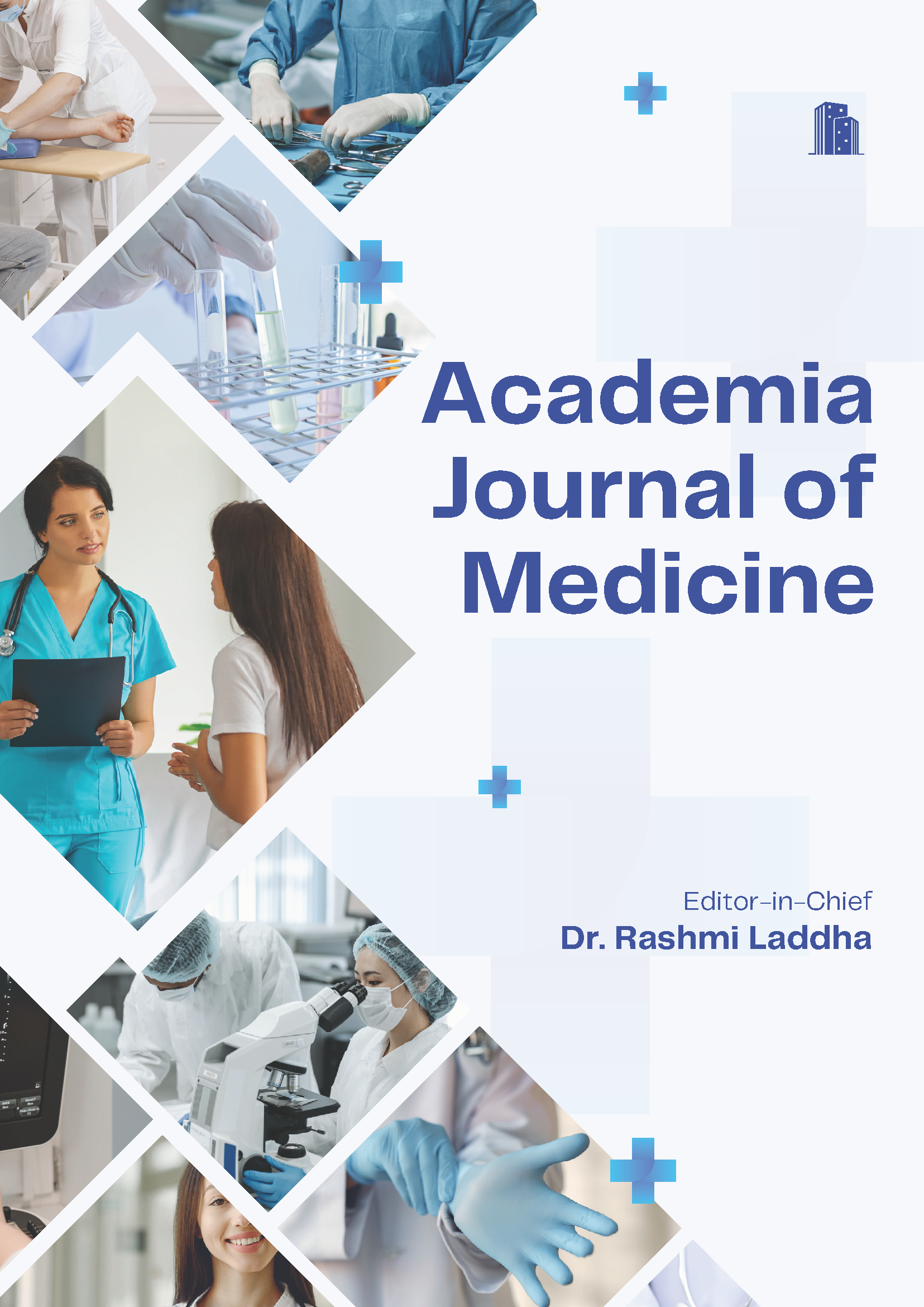Assessment of the Serum Levels of Nitric Oxide Among Diabetic Patients and its Correlation with Lipid Profile as Well as Oxidative Stress
Keywords:
Diabetes Mellitus, Hyperuricaemia, Nitric OxideAbstract
Background: Diabetes mellitus is a disease with a rapidly increasing prevalence needing continue research for novel methods to both prevent and treat this disorder. The present study was conducted to assess the serum levels of Nitric Oxide (NO) among diabetic patients and its correlation with lipid profile as well as oxidative stress. Subjects & Methods: 120 patients with diabetes were divided into three groups: Group I typed 2 diabetics with dyslipidemia and hyperuricaemia, group II have typed 2 diabetics with dyslipidemia and normouricaemia and group III was type 2 diabetics with normolipidemic and normouricaemia. A thorough clinical assessment was performed. Lipid profile and nitric oxide were determined. Results: Age group 20-40 years had 10 in group I, 15 in group II and 10 in group III, 40-60 years had 15 in group I, 13 in group II and 20 in group III and age group >60 years had 15in group I, 12 in group II and 10 in group III. There were 25 males and 15 females in group I, 22 males and 18 females in group II and 20 males and 20 females in group II. BMI (Kg/m2) was 18.5- 24.9 seen 2 in group I, 4 in group II and 6 in group III, 25- 29.9 seen 14 in group I, 12 in group II and 22 in group III, 30-34.9 seen 8 in group I, 20 in group II and 10 in group III and >35 seen 16 in group I, 4 in group II and 2 in group III. There was a non-significant difference in HbA1c, TC, TG, HDL and LDL among different differences (P> 0.05). Conclusion: There was a role of Nitric Oxide (NO) in the pathogenesis of type -2 diabetes mellitus with dyslipidemia and hyperuricaemia.
Downloads
References
1. Schalkwijk CG, Stehouwer CDA. Vascular complications in diabetes mellitus: the role of endothelial dysfunction. Clin Sci.
2005;109(2):143–159. Available from: https://dx.doi.org/10. 1042/cs20050025.
2. Landmesser U, Hornig B, Drexler H. Endothelial Dysfunc tion in Hypercholesterolemia: Mechanisms, Pathophysiologi cal Importance, and Therapeutic Interventions. Semin Thromb Hemost. 2000;26(05):529–538. Available from: https://dx.doi. org/10.1055/s-2000-13209.
3. Baynes JW, Thorpe SR. Glycoxidation and lipoxidation in atherogenesis. Free Radic Biol Med. 2000;28(12):1708– 1716. Available from: https://dx.doi.org/10.1016/s0891- 5849(00)00228-8.
4. Parineeta S, Badade ZG, Sandeep R. Effect of Hyperuricaemia on serum nitric oxide levels in diabetic patients with Hyperlipi demia. Int J Biol Med Res. 2012;3(1):1338–1379.
5. Izumi N, Nagaoka T, Mori F, Sato E, Takahashi A, Yoshida A. Relation Between Plasma Nitric Oxide Levels and Diabetic Retinopathy. Jap J Ophthalmol. 2006;50(5):465–468. Available from: https://dx.doi.org/10.1007/s10384-006-0344- y.
6. Bugiardini R, Manfrini O, Pizzi C, Fontana F, Morgagni G. Endothelial Function Predicts Future Development of Coronary Artery Disease. Circulation. 2004;109(21):2518– 2523. Available from: https://dx.doi.org/10.1161/01.cir. 0000128208.22378.e3.
7. Halcox JPJ, Schenke WH, Zalos G, Mincemoyer R, Prasad A, Waclawiw MA, et al. Prognostic Value of Coronary Vascular Endothelial Dysfunction. Circulation. 2002;106(6):653–658. Available from: https://dx.doi.org/10.1161/01.cir.0000025404. 78001.d8.
8. Ozden S, Tatlipinar S, Biçer N, Yaylali V, Yildirim C, Ozbay D. Basal serum nitric oxide levels in patients with type 2 diabetes mellitus and different stages of retinopathy. Can J Ophthalmol. 2003;38:393–96. Available from: https://doi.org/ 10.1016/s0008-4182(03)80051-0.
9. Aksun SA, Özmen B, Özmen D, Parildar Z, Şenol B, Habif S, et al. Serum and urinary nitric oxide in Type 2 diabetes with or without microalbuminuria. J Diabetes Complications. 2003;17(6):343–348. Available from: https://dx.doi.org/10. 1016/s1056-8727(02)00196-4.
10. Asl SZ, Ghasemi A, Azizi F. Serum nitric oxide metabolites in subjects with metabolic syndrome. Clin Biochem. 2008;41(16- 17):1342–1347. Available from: https://dx.doi.org/10.1016/j. clinbiochem.2008.08.076.
11. Pal R, Dahal S, Ghosh A, Sherpa M, Bhutia Y. Serum nitric oxide status in patients with type 2 diabetes mellitus in Sikkim. Int J Appl Basic Med Res. 2011;1(1):31. Available from: https://dx.doi.org/10.4103/2229-516x.81977.
12. Kumar S, Trivedi A, Verma N, Panwar A, Kumar P. Evaluation of the serum levels of nitric oxide among diabetic patients and its correlation with lipid profile as well as oxidative stress in north Indian setting. J Clin Diagn Res. 2016;10(5):44–47. Available from: https://doi.org/10.7860/jcdr/2016/15548.7868.
